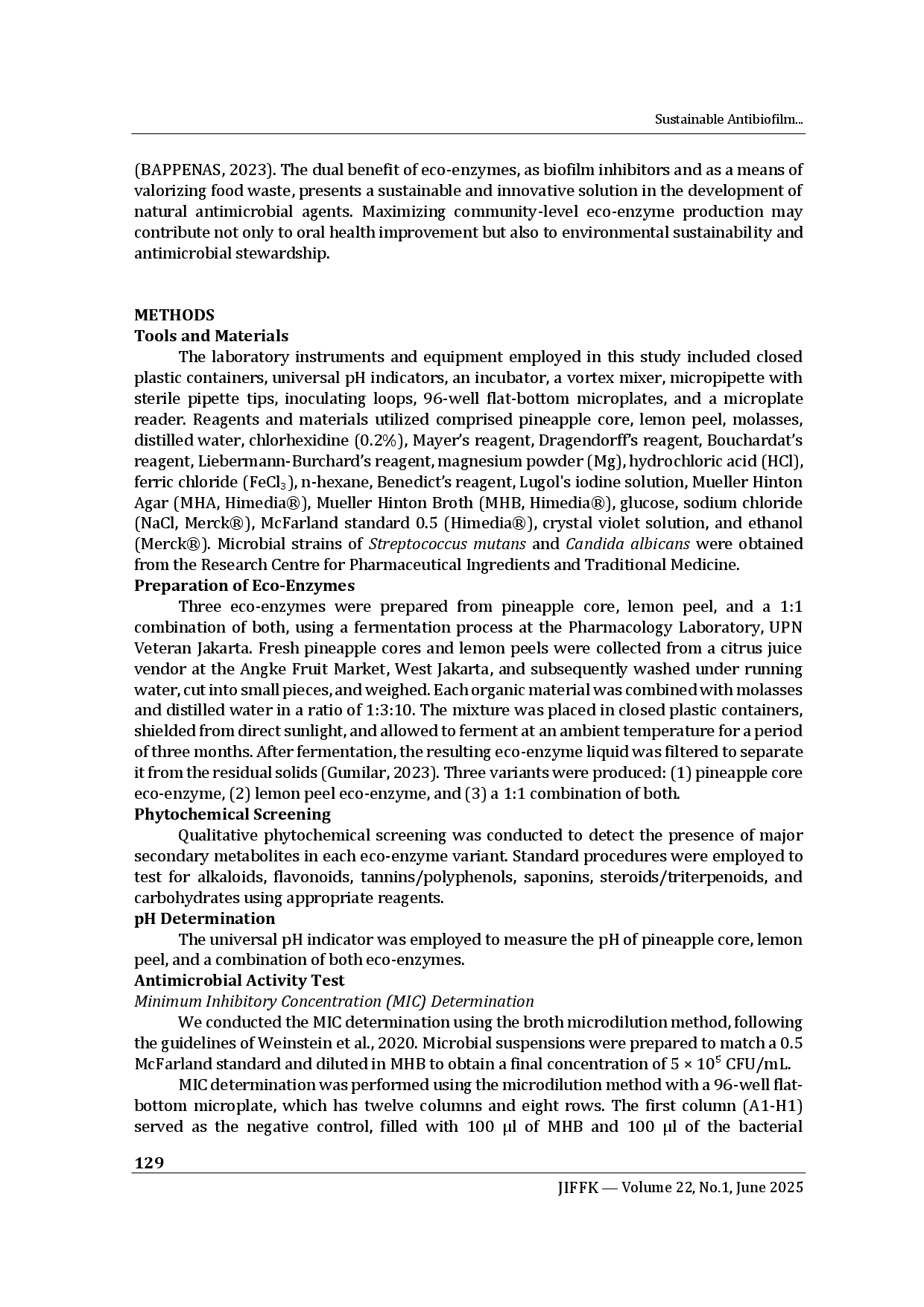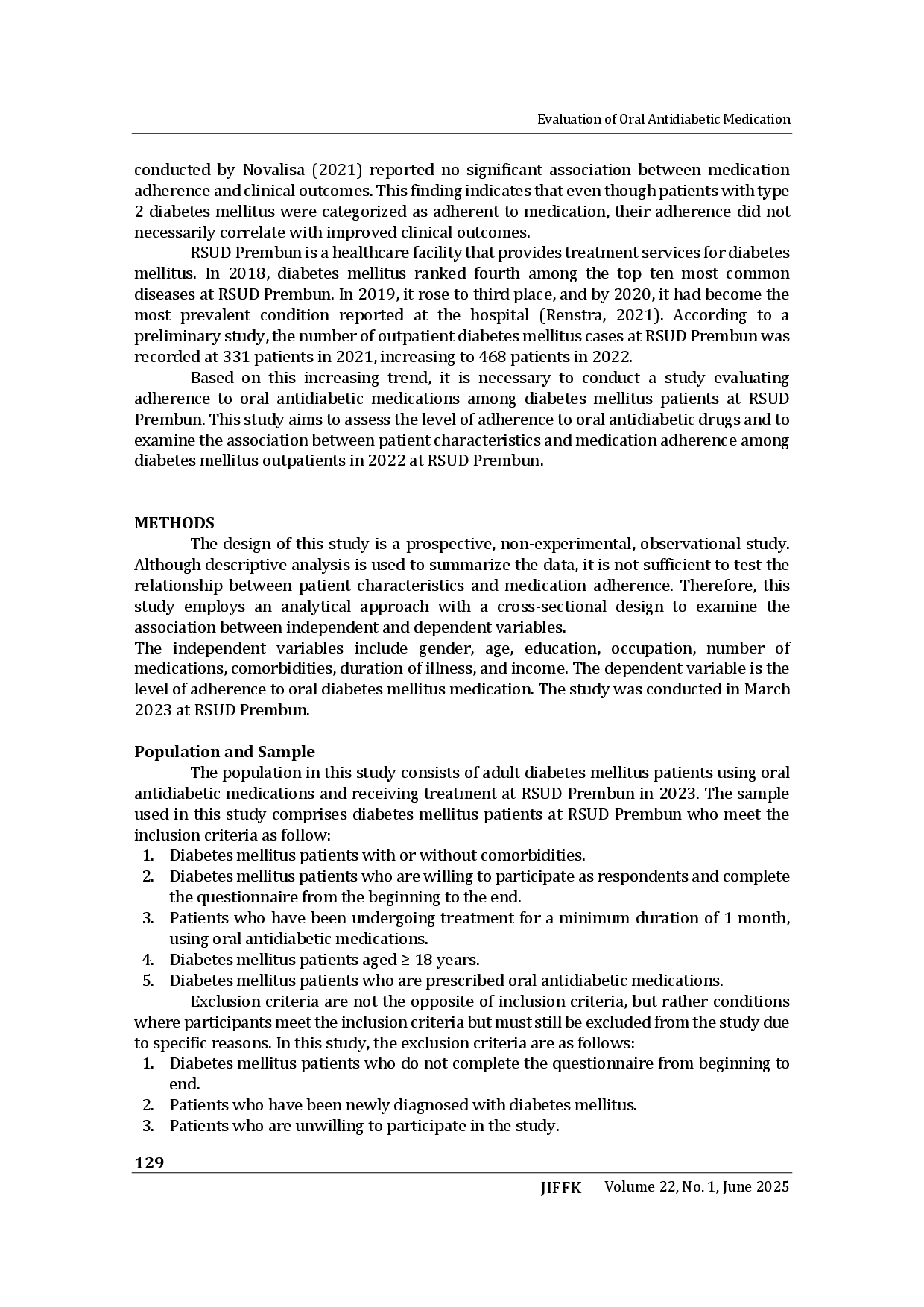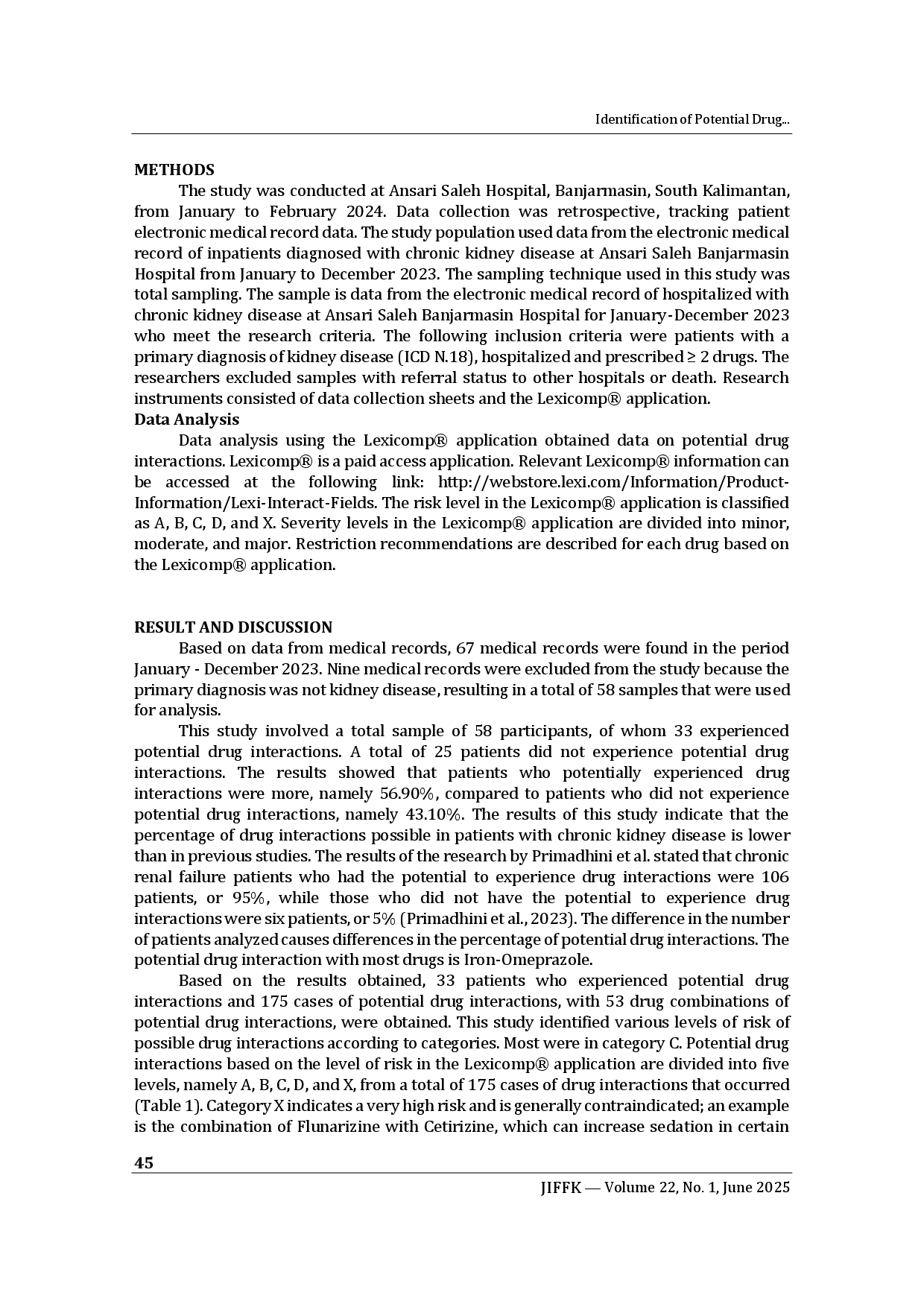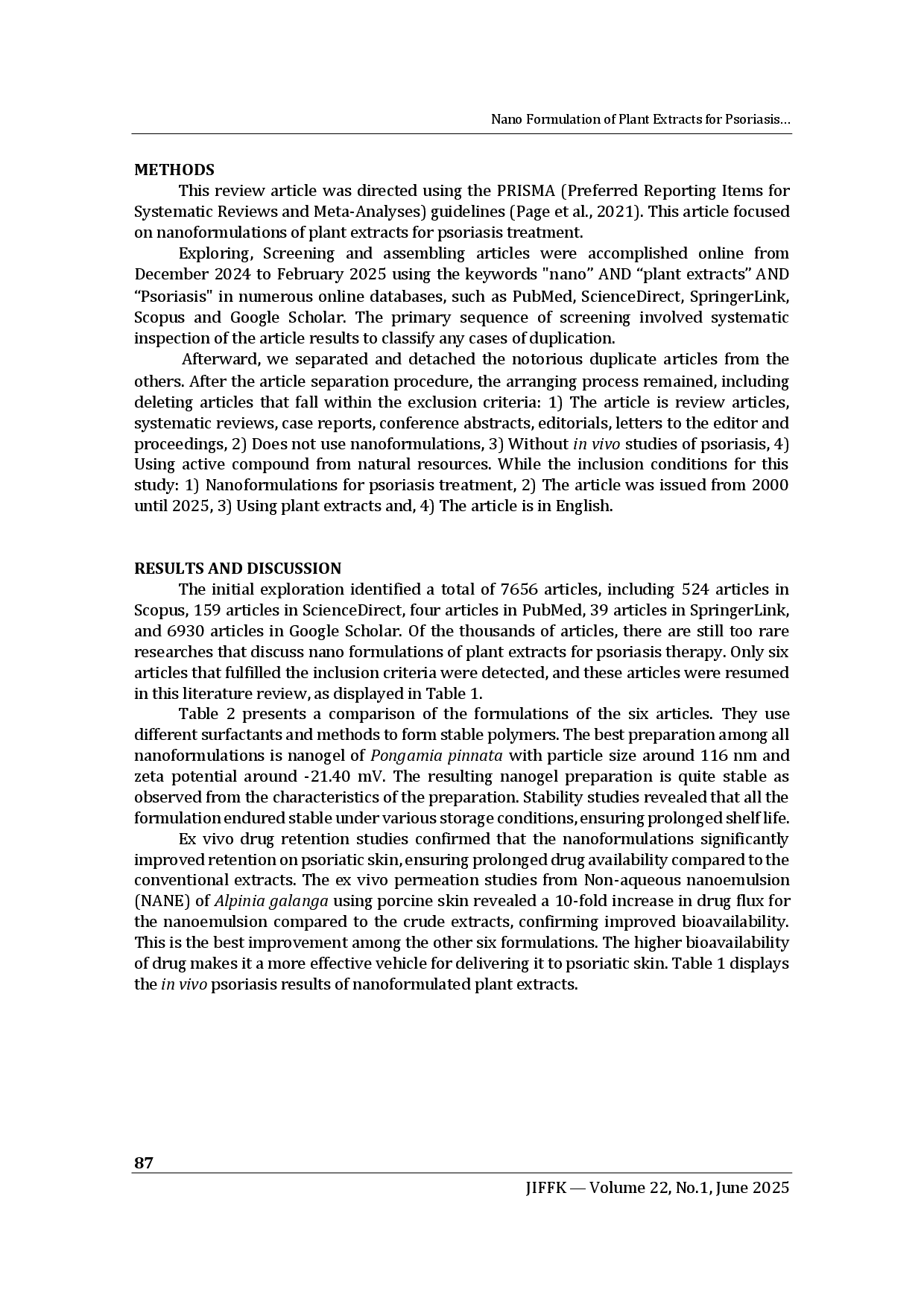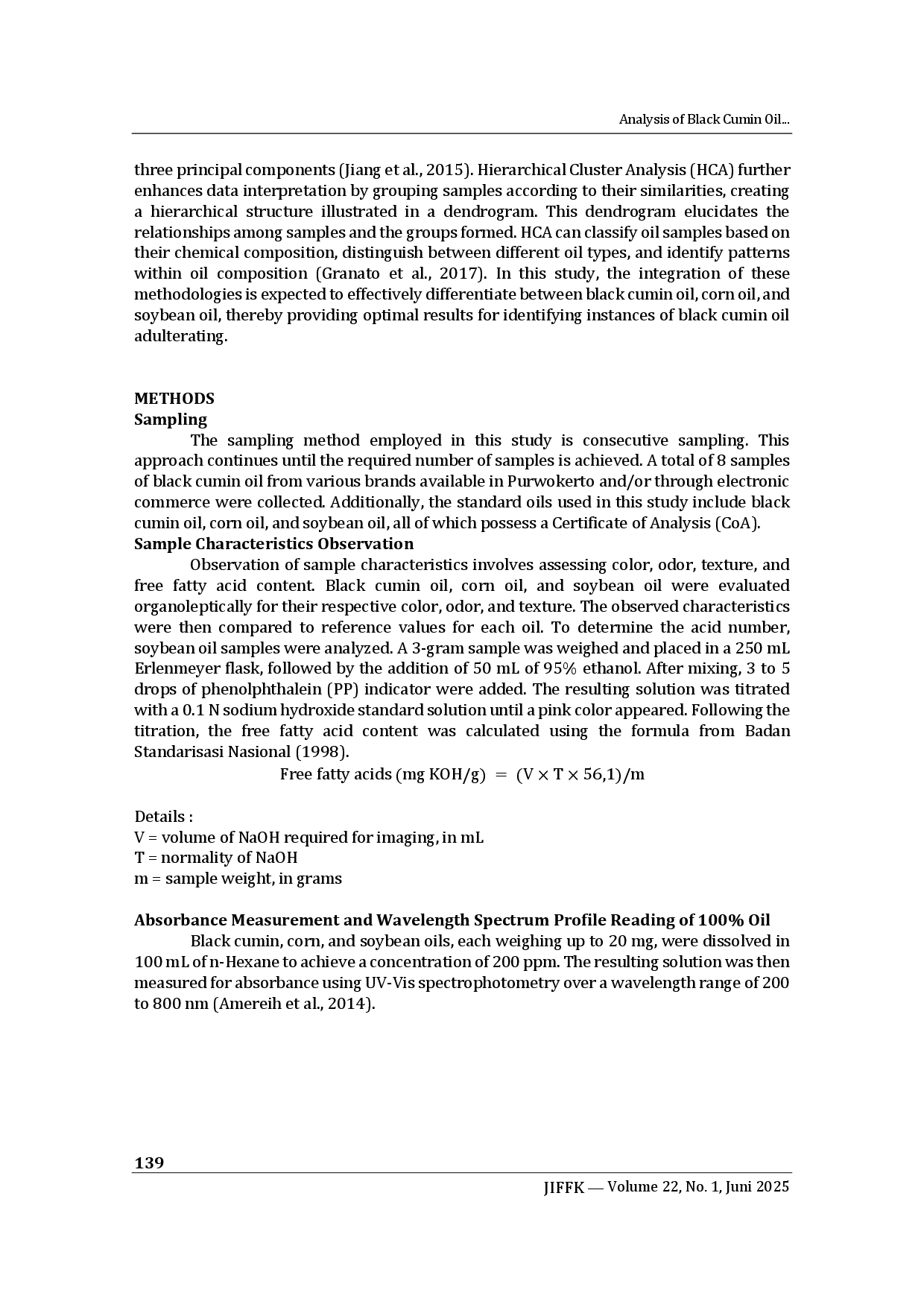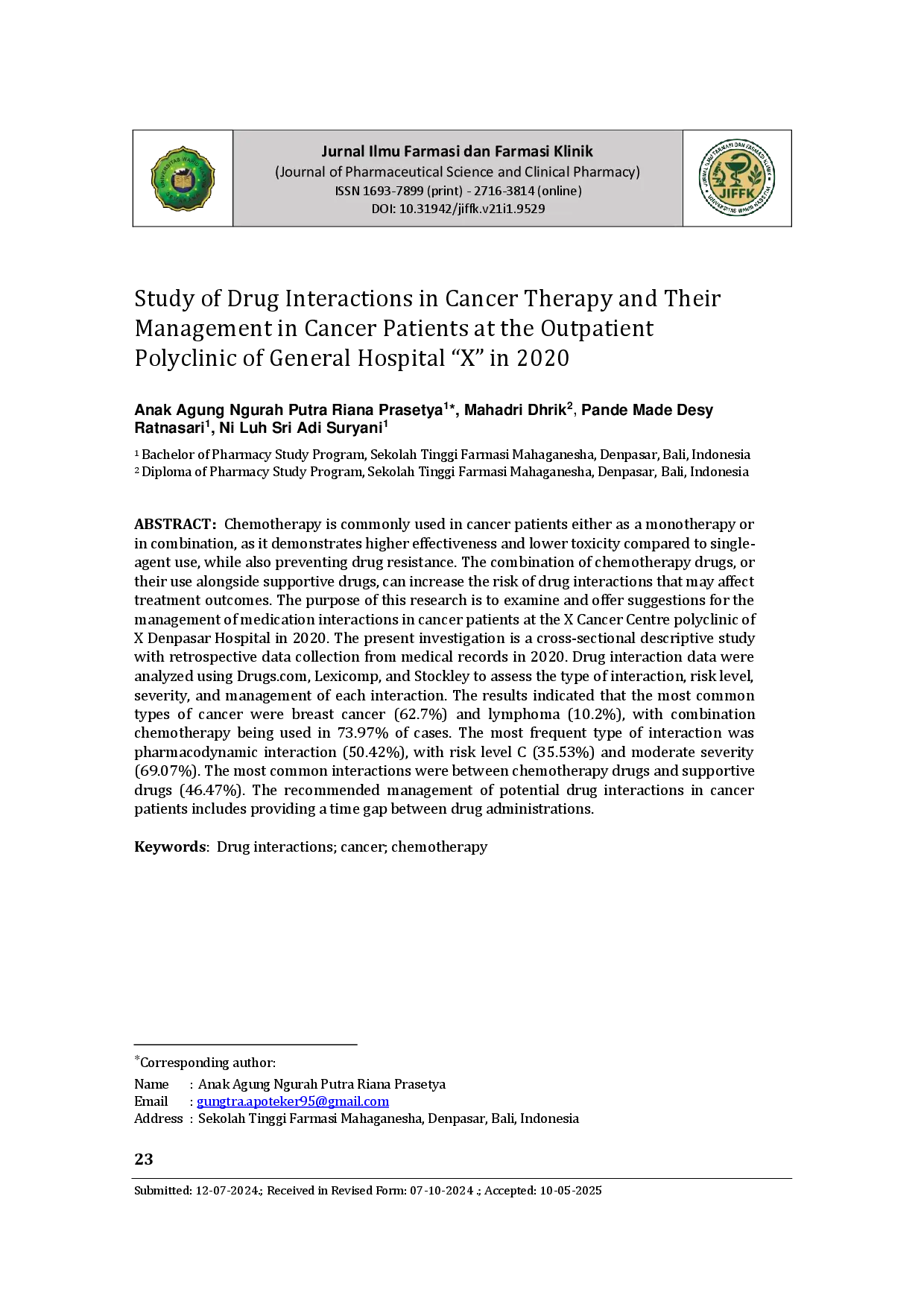UnwahasUnwahas
Jurnal Ilmu Farmasi dan Farmasi KlinikJurnal Ilmu Farmasi dan Farmasi KlinikHigh-alert medications (HAM) are drugs that require strict monitoring due to their high potential to cause significant harm if used improperly. Patient safety incidents can lead to adverse outcomes, including suboptimal treatment effectiveness and increased healthcare costs. This study aimed to analyze adverse events (AEs) resulting from the use of HAMs, identify the types of HAMs that contributed to AEs, and determine the average direct medical costs incurred by elderly patients at K.R.M.T. Wongsonegoro Regional Hospital, Semarang. This research employed a retrospective cross-sectional observational design using secondary data. The study population consisted of elderly patients who were administered HAMs. The sample size was determined using the Design Effect (DEFF) statistical method for cluster surveys, resulting in a sample of 318 patients who met the inclusion and exclusion criteria. Descriptive analysis was used to assess HAM utilization, AE incidence, and direct medical costs borne by the hospital. The results showed that 40.88% of elderly patients had a history of diabetes mellitus. The most frequently administered HAM was the prandial insulin analogue, insulin aspart injection 100 IU/mL (7.29%), which also accounted for the highest number of AEs (30%). The average direct medical cost for patients without AEs was IDR 7,020,721.24, while for those who experienced AEs, the cost increased to IDR 9,493,661.29. These findings indicate that hypoglycemia caused by prandial insulin analog—insulin aspart injection 100 IU/mL, penfill—was the most common AE among elderly patients. Moreover, the average direct medical cost was significantly higher in the AE group than in the non-AE group.
Hypoglycemia (30%) was the most common adverse event associated with high-alert medication use in elderly patients.Insulin aspart injection 100 IU/mL, Penfill, was the most frequently prescribed medication, accounting for 7.Patients experiencing adverse events incurred an average direct medical cost of IDR 9,493,661.29, significantly higher than the IDR 7,020,721.24 cost for those without adverse events.
Penelitian lebih lanjut perlu dilakukan untuk mengidentifikasi faktor-faktor risiko spesifik yang berkontribusi terhadap kejadian hipoglikemia pada pasien geriatri yang menggunakan insulin aspart, termasuk evaluasi fungsi ginjal dan hati serta interaksi obat yang mungkin terjadi. Selain itu, studi intervensi yang melibatkan edukasi pasien dan keluarga mengenai pengelolaan mandiri hipoglikemia, serta optimalisasi dosis insulin berdasarkan pemantauan glukosa darah secara berkala, perlu dikembangkan untuk meningkatkan keamanan penggunaan insulin pada populasi lansia. Terakhir, penelitian yang berfokus pada pengembangan dan implementasi sistem peringatan dini berbasis teknologi informasi untuk mendeteksi potensi kejadian tidak aman terkait penggunaan obat-obatan berisiko tinggi pada pasien geriatri, serta evaluasi efektivitasnya dalam mengurangi insiden dan biaya perawatan kesehatan, sangatlah penting untuk dilakukan.
- Prevalence and factors associated with polypharmacy: a systematic review and meta-analysis | BMC Geriatrics... doi.org/10.1186/s12877-022-03279-xPrevalence and factors associated with polypharmacy a systematic review and meta analysis BMC Geriatrics doi 10 1186 s12877 022 03279 x
- POLIFARMASI PADA PASIEN GERIATRI | Fauziah | Human Care Journal. polifarmasi pasien geriatri fauziah... doi.org/10.32883/hcj.v5i3.796POLIFARMASI PADA PASIEN GERIATRI Fauziah Human Care Journal polifarmasi pasien geriatri fauziah doi 10 32883 hcj v5i3 796
- Evaluation of outpatient adverse drug reactions leading to hospitalization | American Journal of Health-System... doi.org/10.1093/ajhp/60.3.253Evaluation of outpatient adverse drug reactions leading to hospitalization American Journal of Health System doi 10 1093 ajhp 60 3 253
| File size | 1.09 MB |
| Pages | 12 |
| DMCA | ReportReport |
Related /
UnwahasUnwahas The objective of this study was to evaluate the antibiofilm properties of eco-enzymes derived from various organic materials. The assessment involved determiningThe objective of this study was to evaluate the antibiofilm properties of eco-enzymes derived from various organic materials. The assessment involved determining
UnwahasUnwahas Medication adherence in patients with diabetes mellitus is crucial to prevent the onset of complications. This study aims to determine the level of adherenceMedication adherence in patients with diabetes mellitus is crucial to prevent the onset of complications. This study aims to determine the level of adherence
UnwahasUnwahas Penelitian dilakukan di Rumah Sakit Ansari Saleh, Banjarmasin, dari Januari hingga Februari 2024. Sampel penelitian terdiri dari 58 pasien. Data dianalisisPenelitian dilakukan di Rumah Sakit Ansari Saleh, Banjarmasin, dari Januari hingga Februari 2024. Sampel penelitian terdiri dari 58 pasien. Data dianalisis
UnwahasUnwahas Secara keseluruhan, hanya enam (6) artikel yang memenuhi kriteria inklusi. Nanoformulasi tampaknya tidak beracun dan efektif dalam pengobatan psoriasisSecara keseluruhan, hanya enam (6) artikel yang memenuhi kriteria inklusi. Nanoformulasi tampaknya tidak beracun dan efektif dalam pengobatan psoriasis
Useful /
UnwahasUnwahas Penelitian ini mengembangkan kombinasi spektrofotometri UV-vis dan metode kemometrik untuk membedakan minyak jintan hitam dari minyak lain. PenelitianPenelitian ini mengembangkan kombinasi spektrofotometri UV-vis dan metode kemometrik untuk membedakan minyak jintan hitam dari minyak lain. Penelitian
UnwahasUnwahas The study concluded that one out of three herbal medicine samples marketed in the Magelang area, Central Java, tested positive for sildenafil citrate usingThe study concluded that one out of three herbal medicine samples marketed in the Magelang area, Central Java, tested positive for sildenafil citrate using
UnwahasUnwahas Penelitian ini merupakan studi deskriptif cross-sectional dengan pengumpulan data retrospektif dari catatan medis tahun 2020. Data interaksi obat dianalisisPenelitian ini merupakan studi deskriptif cross-sectional dengan pengumpulan data retrospektif dari catatan medis tahun 2020. Data interaksi obat dianalisis
UnwahasUnwahas Hasil menunjukkan nilai EC50 sebesar 94,413 ppm dan penurunan kolesterol maksimum sebesar 27,97% pada konsentrasi 150 ppm, yang mengindikasikan potensiHasil menunjukkan nilai EC50 sebesar 94,413 ppm dan penurunan kolesterol maksimum sebesar 27,97% pada konsentrasi 150 ppm, yang mengindikasikan potensi
